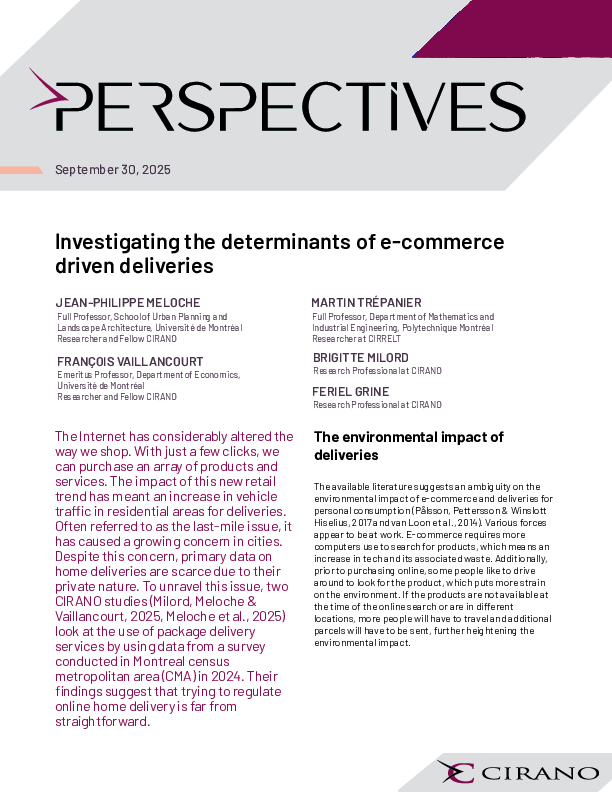Potential Impacts of Telecommuting on Transportation Behaviours, Health and Hours Worked in Québec
Drawing on data from the Statistics Canada General Social Survey 2010 (GSS), this research presents a statistical characterization of telecommuters in Québec, and estimates some of the potential impacts of telecommuting on transportation behaviours, health and hours worked. First, we describe the context that fuelled the growth of telecommuting, and estimate the size of the worker populations concerned by the different types of telecommuting by industry, based on the main socioeconomic and spatial statistics. These results are then compared with experiences outside Québec linked to incentive measures to favour telecommuting.
Second, we make estimates to explain telecommuting activity. We show that the number of telecommuters in Québec is situated at about the national average, but, all things being equal, the probability of observing telecommuting in Québec is greater than elsewhere in Canada. Compared with employees working uniquely at the regular workplace, telecommuters are on average more affluent and educated, more urban, live closer to or farther from the workplace and are less unionized.
Third, we econometrically estimate the relationships between telecommuting and: i) total travel time); ii) travel schedules; iii) levels of reported health and stress, and the feeling of being pressed for time; and iv) hours worked. These estimates consider behaviours according to types of organization of work, socioeconomic characteristics and time use. The models estimated specifically pertain to Québec and show that there are generally few significant differences between respondents in Québec and in the rest of Canada.
Concerning transportation behaviours, telecommuting is generally associated with a reduction in travel during peak periods. In contrast, compared with work uniquely at the regular workplace (e.g. office), telecommuting may have different effects on total travel time during the workday. Employees working only at home travel on average 19 minutes less, whereas those who divide their work between home and the regular workplace travel for the same amount of time as other employees. Employees working at several sites, including third places (e.g. cafes), travel for about 17 minutes longer per day on average.
Further, depending on its form, telecommuting is associated with increases or decreases in hours worked on the survey day. Compared with employees who work only at the regular workplace, people who work only at home work about 2 hours and 15 minutes less. Respondents who combine work at home and/or at the regular workplace with other places work about 43 minutes less. In contrast, employees who work at home and at the regular workplace reported nearly 49 more minutes of work. Lastly, telecommuting is associated with increased feelings of stress and being pressed for time, but has no links to reported health.




